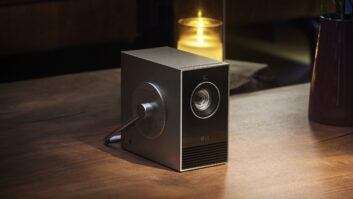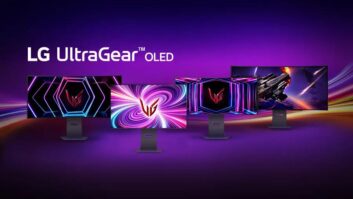Orlando, Fla. – LG Mobile Phones plans
to boost the smartphone share of its global and U.S. unit cellphone shipments to
20 percent in 2011 from less than 10 percent in 2010, U.S. marketing VP Tim O’Brien
told TWICE during the CTIA convention.
The effort will boost LG’s
smartphone dollar volume to anywhere from 35 percent to 40 percent of the
company’s total cellphone volume, he said.
As part of the smartphone drive,
the company looks forward to offering more “superphones” in 2011 as well as
more Android and Windows Phone 7 smartphones. The product plans include an
expanded selection of Optimus series smartphones. In the U.S., the Optimus
series will represent LG’s entry-tier smartphones, all designed to encourage
people to step up from feature phones without paying more than $100, O’Brien
said.
Also to boost U.S. smartphone
sales, the company will redirect LG Mobile Phones’ entire U.S. consumer
advertising budget to promote premium superphone smartphones and tablets,
O’Brien said. To accelerate sales of entry-tier smartphones, which carry the
Optimus sub-brand, the company will improve its in-store merchandising programs
to tap consumers stepping up from LG feature phones. The company is focusing on
in-store merchandising to boost its entry-level smartphone sales because
feature-phone owners “want to learn in-store,” while potential superphone
purchasers do much of their research on-line, he said.
As part of the in-store effort, LG
is expanding its retail support team, whose members train retail salespeople
but also join store salespeople on the sales floor, he said.
Other efforts designed to boost LG’s
smartphone sales include an expanded number of LG-dedicated store-within-a-store
displays, the first of which launched last year and now number 500. Most have
been placed in indirect stores to date.
The store-within-a-store displays
consist of wall displays and freestanding towers with active phones and
flat-screen TVs that play SD-card-stored promotional videos. The displays deliver
interactive capabilities when active smartphones are attached to the displays,
he added. Pressing the 3D camera button on a connected smartphone, for example,
will launch an explanation of 3D technology on the display, he said.
The company’s consumer
advertising program, which will focus exclusively on superphones, will be
directed mostly to TV ads but will include web advertising to let consumers see
the “full experience,” O’Brien said. For that reason, the ad plans exclude
print advertising.
O’Brien defined superphones as
offering displays of at least 4 inches, a processor of at least 1GHz, and lots
of embedded memory. For LG, superphones will also deliver such enhanced
features as bright displays usable in direct sunlight, 3D displays, and the like.
Superphone ads will go live to
support carriers’ launches. The ads will include ads for the G2x for the
T-Mobile network and the Revolution for Verizon’s 4G LTE network.
On other matters, O’Brien
declined to say whether a Wi-Fi-only version of its the 4G-equipped T-Mobile
G-Slate with Google by LG, which is due in the spring at $529 with qualifying
data plan. He did say LG is talking to all of its carrier customers to offer
cellular-embedded tablets.













